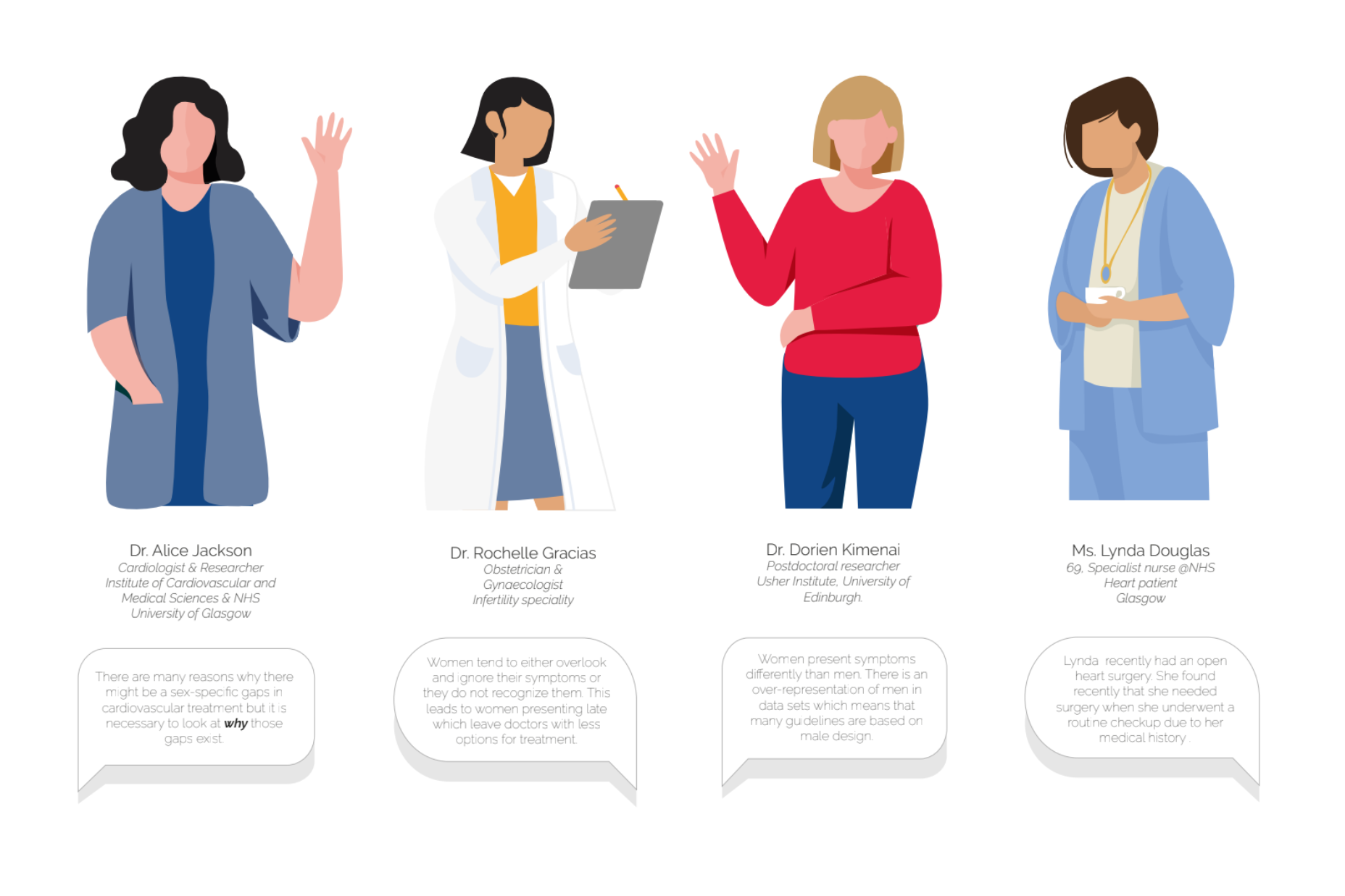Invisible Women
“Looking at groups that are otherwise considered invisible is a challenge worth designing for. It helps you look beyond the tick-box culture and to truly design with a more empathetic approach.”
Team: Carolina Moyano Izquierdo, Partel Unga, Kwanprapa Unarat, Zain Zulfiqar Ali, Fanechka Fernandes
We participated in the Student Service Design Competition 2019 which was sponsored by IBM & Philips. This 6-month-long project was focused on Heart Health in Europe and the video & write-up below are what we delivered as a team. We were selected as the finalists for the competition and were also featured on the competition's website. You can check that out by clicking here.
We started this competition with the question: How can we improve the heart health of people in Europe that are otherwise considered ‘invisible’, people who have been neglected, underserved, forgotten, or overlooked? The word ‘invisible’ piqued our interest and we decided to focus on people or groups of people that weren't visible enough in our society in terms of heart health.
As a part of the insight-gathering process, we spoke to multiple experts as well as patients to know about their journeys and experiences from the time symptoms are presented to the time that a diagnosis is made. While the focus was on their individual journeys, we did ask specific questions based on their unique placement in the healthcare system. To the academics and researchers, the questions revolved around sex differences (gender gap) in currently available data, the transfer of this data, and its availability to practicing doctors. To the practitioners, we asked about their interaction with this data gap and how they tackled it in their practice. We asked them about their ongoing research in sex-specific treatments of SMIs and the factors that might contribute to a data gap.
We created journey maps for patients to fill in about their heart journey.
During our ideation phase, we created various scenarios based on a few of the ideas we had developed. We used methods such as the crazy-8s and brainwriting to come up with a rough skeleton of the solution we wanted to provide and select what we considered the most feasible and impactful concept. After deliberating among ourselves, each one of us came up with a user journey, which we then combined to form a final flow. We felt that this helped us combine the different perspectives within the team and consider the numerous ways our service could work.
Service Blueprint for the Heart2Heart service
The final outcome and presentation
THE PROPOSED IMPACT:
While I am aware that data gathering is a complicated endeavor, through this project we aspire to the long-term vision that this campaign not only collects enough data to bridge the current gap in sex-specific studies of cardiovascular diseases but also creates awareness among women to take care of their heart health by creating a community of women for women. We hope that women feel safer while wearing the band and that the initiative makes it easier to identify risks, monitor symptoms that many women face, and seek help when they need it. It is time that this becomes a conversation every woman has with their daughters, sisters, and friends. Heart attacks do not just affect men after all.









